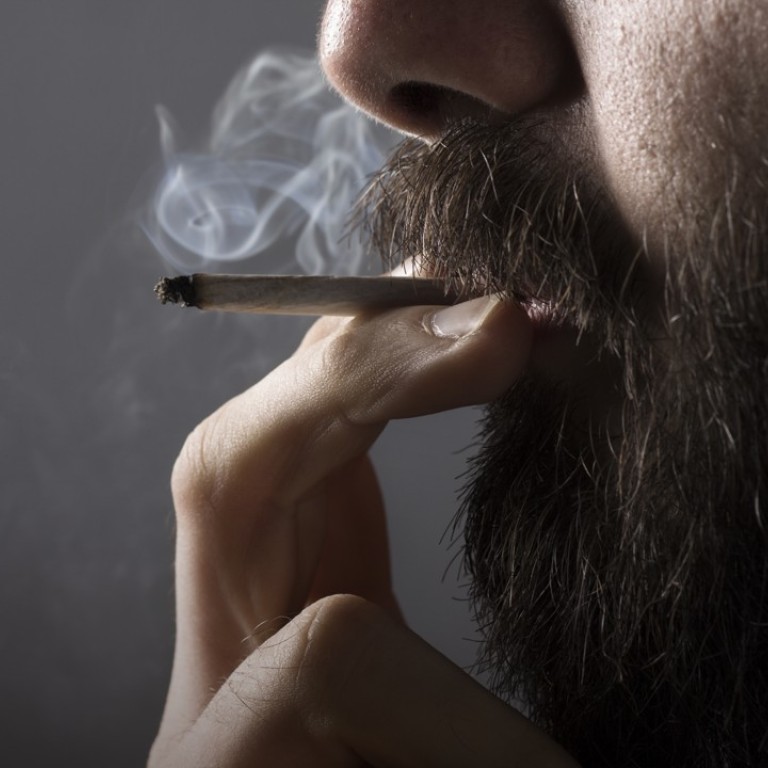
The cheapest countries in the world for drugs, booze and cigarettes
Vice is cheapest in Luxembourg, where the cost comes in at less than 10 per cent of the US$2,071 average weekly wage, which is the highest in the world
The cost of maintaining a drugs, booze and cigarettes habit was cheaper in Hong Kong and Singapore than the US last year, the annual Bloomberg Global Vice Index shows.
Americans had to fork out over US$200 more for a basket of so-called vice goods last year versus 2016, with only New Zealand seeing a bigger increase.
The gauge compares the share of income needed to maintain a broad weekly habit of cigarettes, alcohol, marijuana, amphetamines, cocaine and opioids across more than 100 countries.
Doing so eats up more than a third of the average weekly pay cheque in more than three quarters of the economies tracked, the index shows.
The gauge is purely an economic indicator, not a judgment about morality or legality. Nor does it track gambling, prostitution or other illicit activities.
Vice is cheapest in Luxembourg, where the cost comes in at less than 10 per cent of the US$2,071 average weekly wage, which is the highest in the world. The Bahamas, Switzerland, Iceland and France round out the top five for affordability.
By contrast, Ukrainians must spend 13 times their weekly salary for the same fix, making it one of the costliest places for those making local wages. Pakistan, Nepal and Burkina Faso also score near the top for higher prices.

The vice indicator uses US prices as the global benchmark. At 54 per cent of pay, or US$617, the United States ranked 38 in terms of affordability, compared with 17 a year earlier.
By comparison, Hong Kong ranked 24 with 37 per cent of pay (US$326) and Singapore, down five places from a year before at 46 per cent and US$481.
Mainland China was ranked 67 out of the top 75 most affordable places for vice.
The top 10 most affordable places for vice:
1. Luxembourg
2. Bahamas
3. Switzerland
4. Iceland
5. France
6. Norway
7. Netherlands
8. Germany
9. Denmark
10. Belgium
In absolute terms, the gross weekly cost exceeded US$1,000 in only three countries: Japan, New Zealand and Australia.
By comparison, an equivalent basket ran less than US$100 in 21 mostly tropical countries, including the Dominican Republic, Ghana, Congo, Colombia, South Africa, Guatemala, Kenya and Myanmar.
While laws remain a key factor for narcotics prices, those dynamics may be in flux as more drug sales move online.
The new avenues make some drug markets less risky as they let users “buy drugs with a cryptocurrency, such as bitcoin, and have their purchases delivered to them in a concealed manner,” the United Nations 2017 World Drug Report says.
“Something like bitcoin has appealed to dealers because it’s anonymous,” said Jonathan Caulkins, a professor at Carnegie Mellon University in Pittsburgh and former co-director of RAND’s Drug Policy Research Centre.
“Banking creates a trail that they don’t want.”
Vice prices tumbled the most in Iran, Norway and South Korea, all of which saw the weekly tab for the basket of drugs, alcohol and tobacco fall by more than US$200 from the prior year.
The difficulty in collecting data on illegal activity means survey responses often have a lag, which makes comparisons harder. As a result, nations with missing data weren’t included in the overall index and those with data had wide estimated ranges.
This year’s Bloomberg Vice Index also included the size of the “shadow” drug economy in different regions by approximating the retail value of narcotics seized by law enforcement.
Like other businesses, retail-wholesale pricing dynamics and supply-chain management are the keys to efficiency.
“A shadow economy, or underground economy, is run as an efficient business like the official one,” said Friedrich Schneider, an economics professor at Johannes Kepler University in Linz, Austria.
On mark-ups for narcotics prices, “cannabis markets tend to be more competitive in most countries, especially because it is frequently produced locally,” according to Manolis Galenianos, an economics professor at Royal Holloway University of London.
“Cocaine and opioids, by contrast, have to be imported from abroad, which requires a much higher level of sophistication and is, therefore, done by only a few organisations,” leading to more concentrated markets and higher mark-ups, Galenianos said.
Bloomberg’s vice basket tracks average retail prices for:
● A pack of cigarettes, popular and premium
● A bottle of alcoholic beverages including beer, wine and spirits
● A gram of amphetamine-type stimulants, including methamphetamine and/or ecstasy
● A gram of cannabis, including marijuana hashish resin and/or cannabis oil
● A gram of cocaine, regardless of salts, paste or base forms
● A gram of opioids, including heroin and/or opium.

